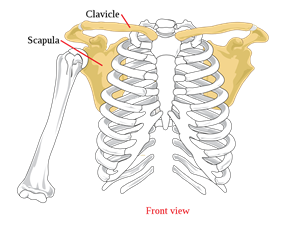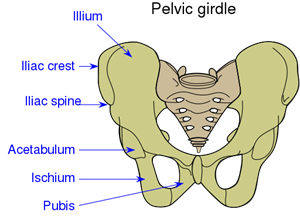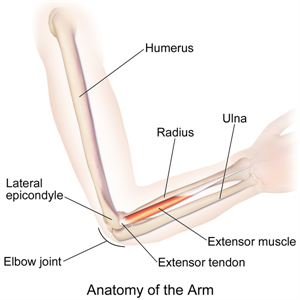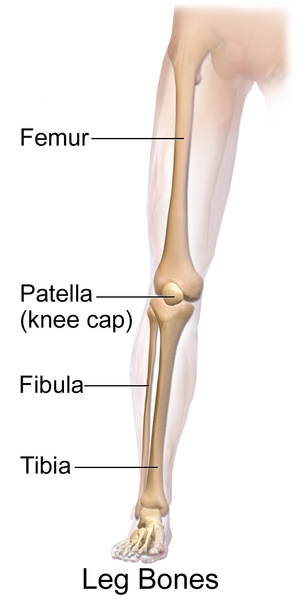PDF chapter test TRY NOW
The appendages of the body, as well as the structures that connect the appendages to the axial skeleton together form the appendicular skeleton.
The appendicular skeleton comprises of the shoulder girdle; the arm, wrist, and hand bones; the pelvic girdle; and the leg, ankle, and foot bones.
Shoulder bone or Pectoral bone
The collar bone at the front and the shoulder blade at the back together form the shoulder bone. The breast bone and the shoulder blade supports the collar bone at the ends. The shoulder bone is where the ball and socket joint is found as here the shoulder bone encloses a socket-like cavity that fixes the ball of the upper arm. This girdle is also known as the pectoral girdle.

Pectoral girdle
Pelvic bone
It is also known as the pelvic girdle. This is a structure made up of strong bones so that the entire weight of the body can be balanced. This girdle is formed by the appendicular hip bones (ilium, ischium, and pubis) that form a ring-like structure and connect the pelvic region of the spine to the lower limbs. The tendon's movable end is drawn out to form a strong structure that connects to the bone.

Pelvic girdle
Arm bone
It is the upper limb made up of bones such as humerus, radius, ulna, carpals, metacarpals, and phalanges that are joined by the hinge joints which allow the limb to move only in one direction.
The humerus is the bone that makes the upper arm, and the radius and ulna make up the forearm. The carpals, metacarpals, and phalanges are the bones that make up the wrist, palm, and fingers, respectively.

Bones of the arm
Leg bone
These are the bones of the lower limb. It consists of bones such as the femur, tibia, fibula, tarsals, metatarsals, and phalanges joined together by the hinge joints which allow the limb to move only in one direction.
The knee is covered by a cap-like structure called patella or a knee cap that plays a role in the knee extension. Femur forms the thighbone. It is the longest and strongest bone of the human skeleton. The leg region is made up of the tibia and fibula. The ankle is made up of tarsals; the foot is made up of metatarsals, and the toes are made up of phalanges.

Reference:
https://en.wikipedia.org/wiki/Shoulder_girdle#/media/File:Pectoral_girdle_front_diagram.svg
https://commons.wikimedia.org/wiki/File:Pelvic_girdle_illustration.svg
https://commons.wikimedia.org/wiki/File:Arm_Bones.png
https://commons.wikimedia.org/wiki/File:Blausen_0608_LegBones.png
